Exploring the Present and Future of Safety at Argentina’s Transportation Safety Board (JST) Symposium
Aviacionline attended the Symposium «Present and Future of Safety in Transportation in Argentina and the Region,» as guests of the Transportation Safety Board (Junta de Seguridad del Transporte – JST). The event took place at the Pontifical Catholic University of Argentina’s Buenos Aires campus (UCA) from April 25 to 27.
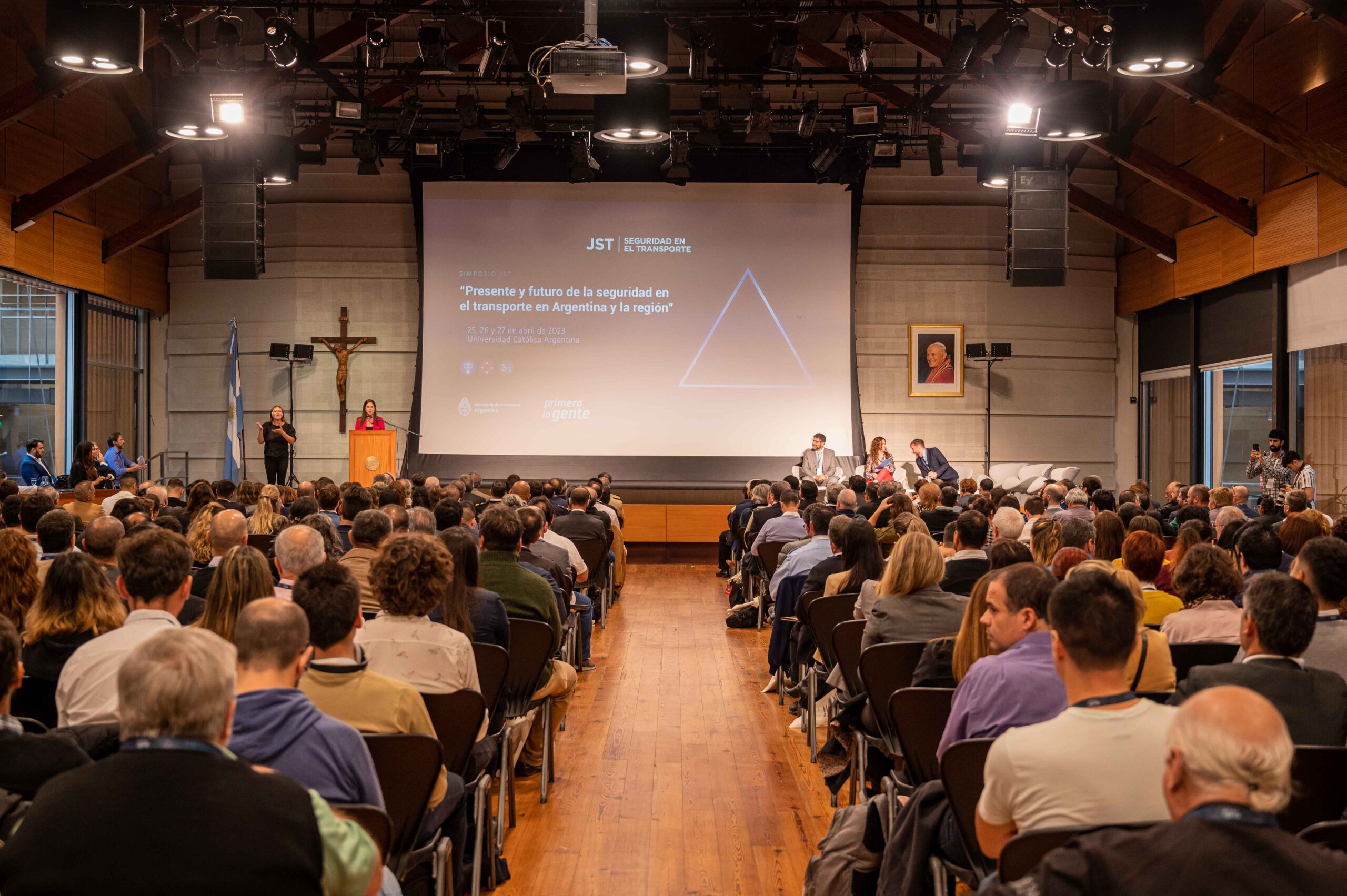
Over the course of three days, 40 national and international speakers participated in the event. Each day focused on a specific theme, with Tuesday’s discussions centering around «Innovation in Operational Safety in Transportation: New Technologies and Processes.»
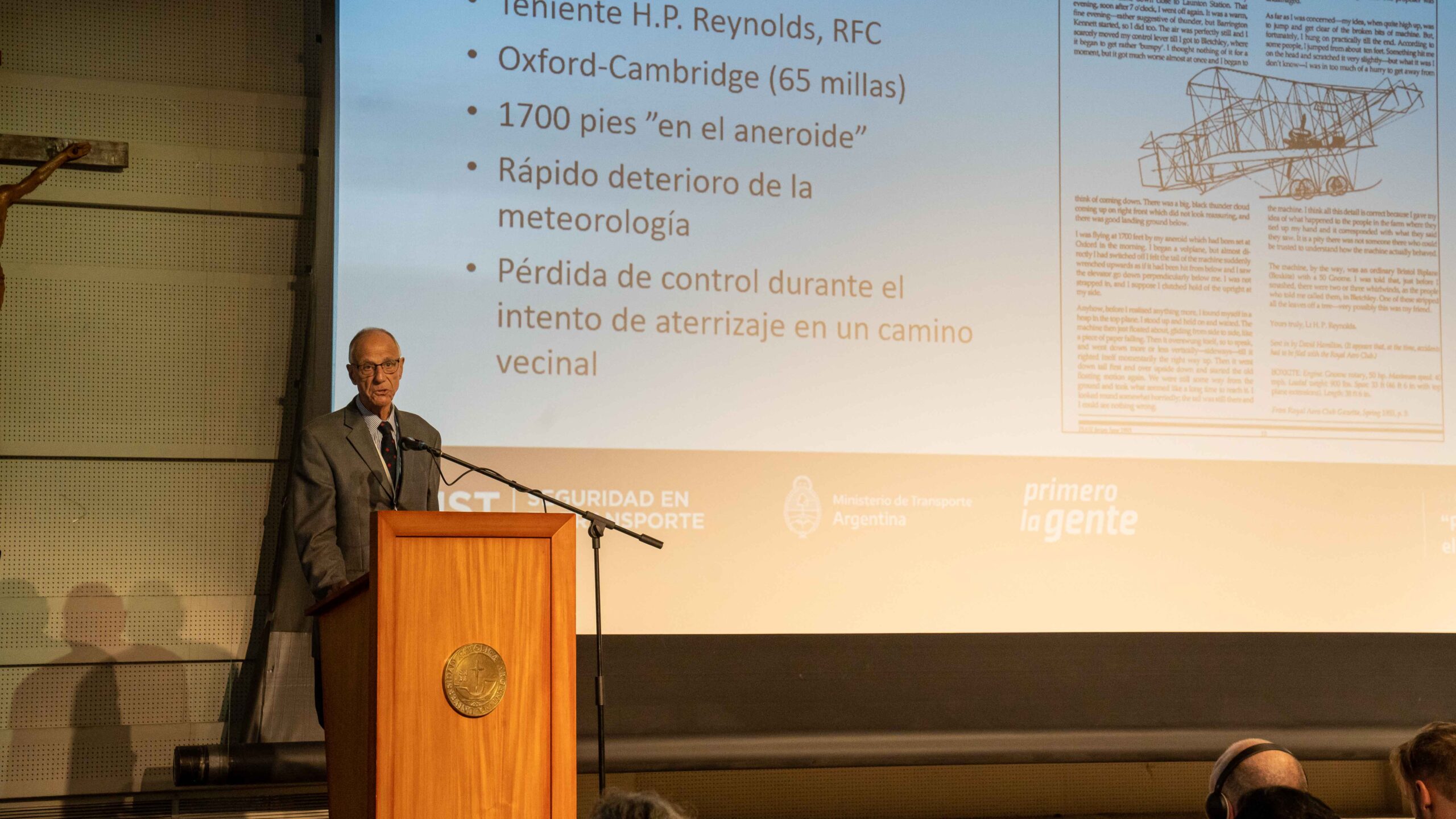
The Symposium was opened by Daniel Mauriño, Operational Safety Advisor of the International Civil Aviation Organization’s (ICAO) Technical Cooperation Bureau (TCB). Mauriño served in various capacities at ICAO in Montreal, Canada, for 21 years. He initially worked as the Flight Safety and Human Factors Program Coordinator, then as the ICAO project manager for operational safety management implementation, and finally as the head of the Integrated Safety Management (ISM) Section, which he created.
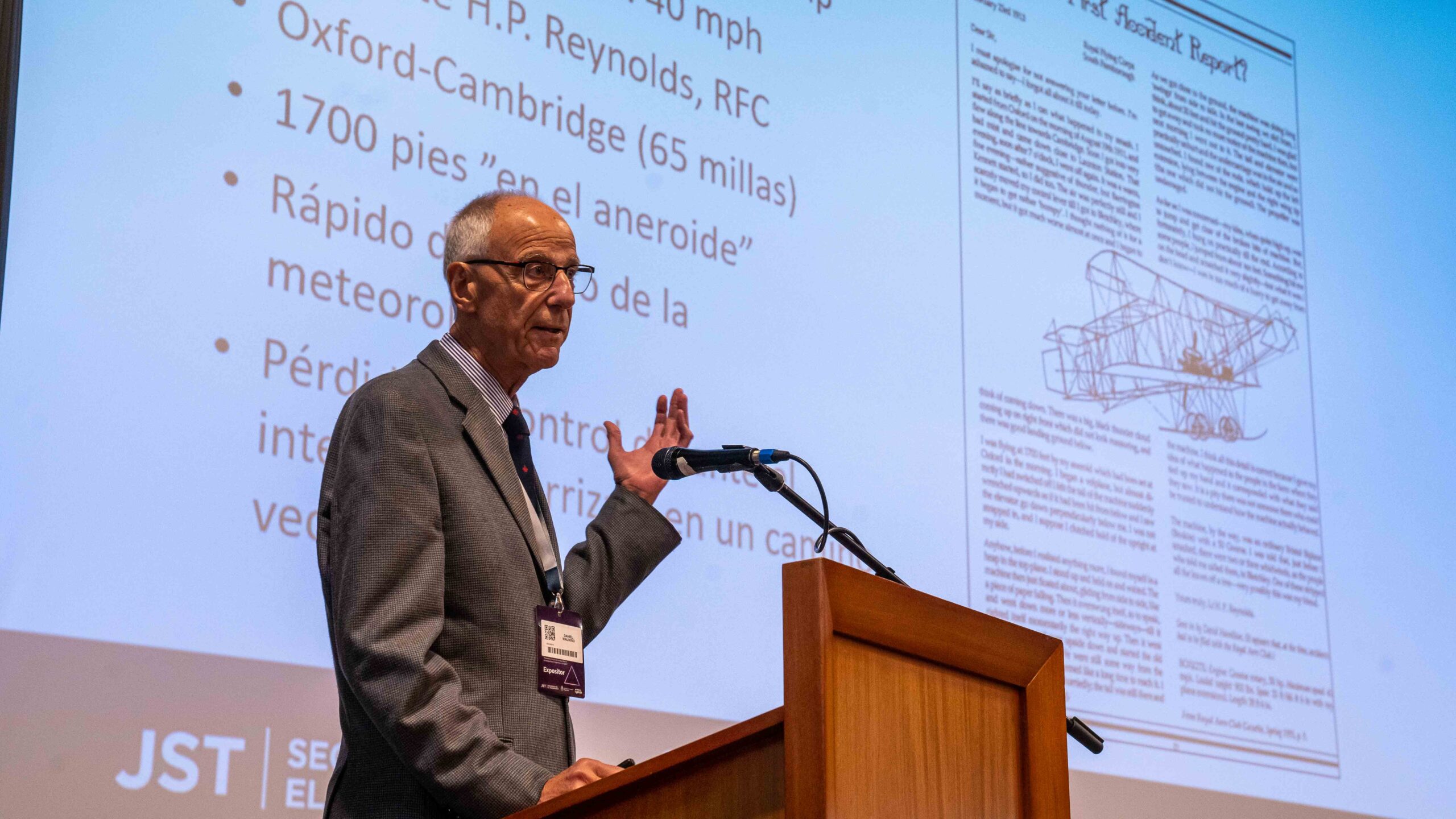
Mauriño’s presentation delved into the history of civil aviation investigations, starting with the first known incident: the accident of a Bristol Boxkite (50HP) biplane on February 23, 1903, piloted by Lieutenant H.P. Reynolds. The aircraft crashed onto a nearby road due to a loss of control near Oxford-Cambridge, England.
From this starting point, Mauriño argued that accident investigations as a process predate the first certified flight, running parallel to the history of aviation itself. Such investigations have allowed for innovation and excellence in flight quality and safety, transforming failures into successes.
Two notable examples from the 1940s are the De Havilland Comet (Jet) and the Lockheed Electra (Turboprop). The former experienced structural issues with its windows, causing explosive decompression, while the latter suffered from structural vibration that led to wing detachment from the fuselage.
Both aircraft were improved due to the lessons learned from these incidents, which laid the foundation for aircraft certification and design guidelines. Accident investigations have played a crucial role in this development process.
In the 1970s, the focus shifted from a strictly centralized approach, concentrating on pilots, to a more advanced sociotechnical analysis model. James Reason‘s «Swiss Cheese» model depicted defense barriers, latent and active failures, and the importance of studying human factors and crew resource management (CRM).
It is also essential to clarify the independence of investigative organizations from judicial investigations. These separate efforts aim to determine responsibility and operational safety recommendations to mitigate risks and strive towards zero accidents.
During the third panel on the first day of the JST Symposium, titled «Innovative Technological Products that Improve Transportation Safety,» Cesar Garcia Castilla opened the speaker’s dissertations. An aeronautical engineer and Product Safety Manager at Airbus, Garcia Castilla works on risk identification through incident analysis in the aviation industry and proposes proactive solutions to prevent accidents.
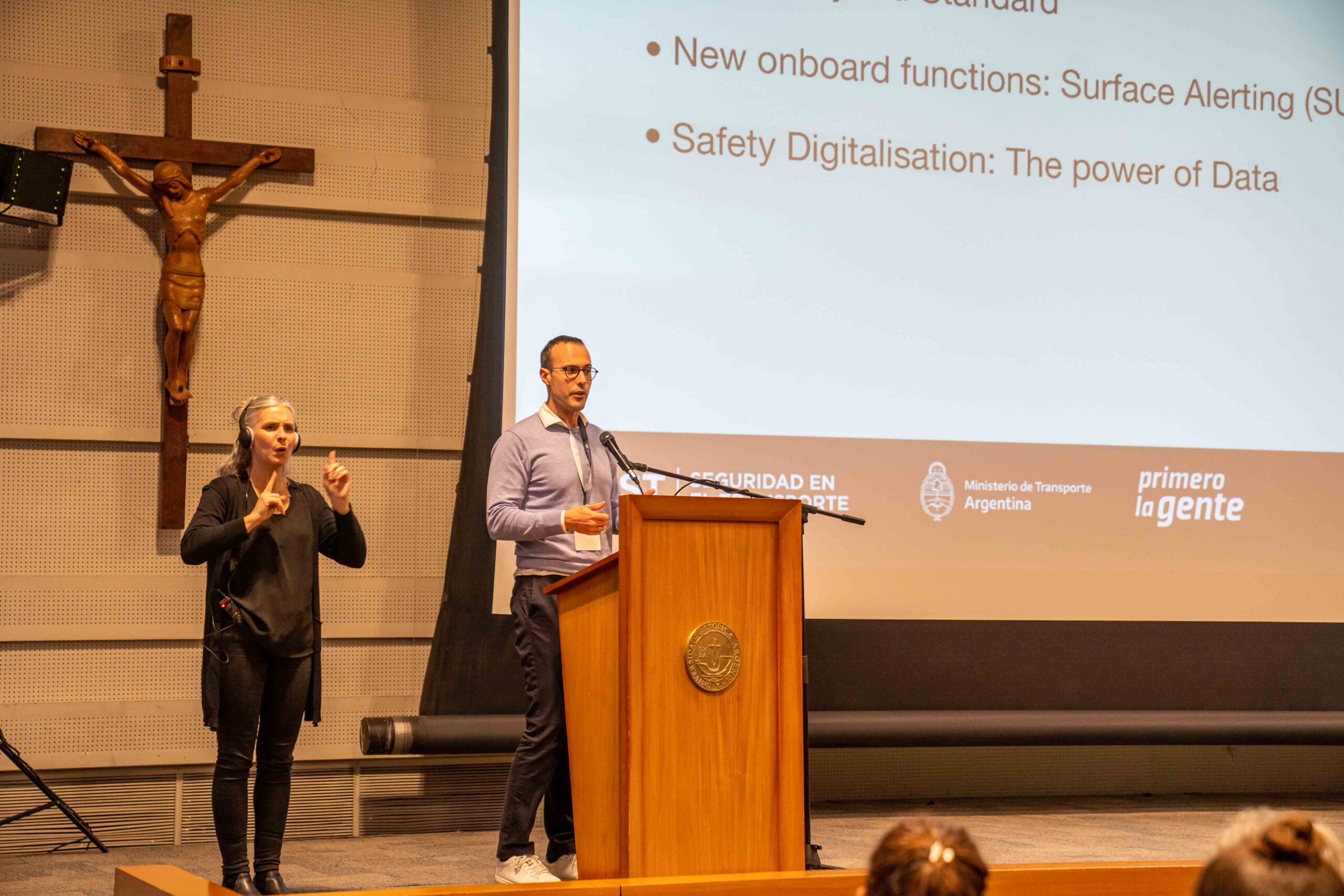
Garcia Castilla’s JST Symposium presentation covered four main topics:
Airbus’ safety vision
Safety beyond the standard
New onboard functions: Surface Alerting SURF-A
Digitization of Safety: The Power of Information
Garcia Castilla began by stating «At Airbus, we constantly strive to improve safety, together, in our quest to achieve zero accidents. Although it is impossible to completely eliminate accidents, minimizing and mitigating risks brings us closer to that goal.»
Collaboration between manufacturers, airlines, and regulators is essential to standardizing processes and achieving substantial improvements.
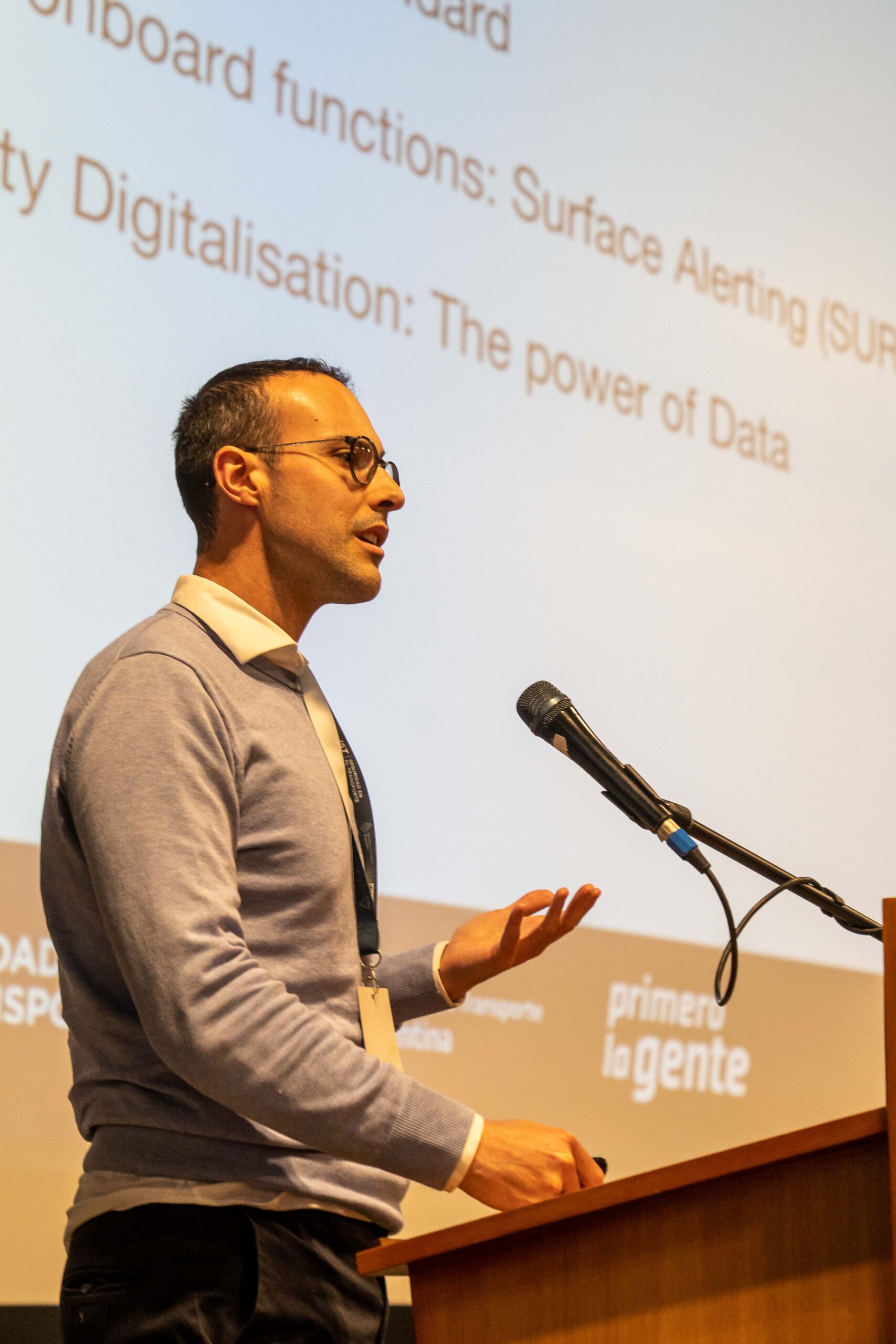
Three examples discussed during the presentation were:
Safety beyond the standard: Enhancing the capabilities of aircraft, regardless of their age, by bringing them up to the latest operational standard. This includes upgrading Airbus A320 and A330 models to match the latest generation of aircraft, such as the A350, equipping them with new processing, memory, flight management, and automation features. This led to the development of the A320 and A330 NEO models.
Airbus identified three major challenges in flight: Loss of Control (LOC), Controlled Flight Into Terrain (CFIT), and Runway Excursion (RE). In response, Airbus introduced various systems, including:
Stall Awareness: A warning alarm displayed on the aircraft’s Primary Flight Display (PFD), indicating a loss of lift.
ROP: Runway End Overrun Protection, a system that enables proper braking to prevent the aircraft from going off the runway.
ROW: Runway Overrun Warning, a system that alerts pilots when a go-around is necessary due to insufficient remaining runway for stopping.
SURF-A: This system aims to prevent runway incursions and collisions. For example, the 1977 Los Rodeos accident, which remains the worst aviation disaster even after 40 years, highlights the ongoing issue of runway collisions. Rates have not decreased but have increased abruptly, as evidenced by incidents in Shanghai (2016), Lima (2022), JFK (2023), and Austin (2023). The European Union Aviation Safety Agency (EASA) conducted a risk mapping study in their latest Safety Review.
SURF-A is an alert displayed on the Primary Flight Display (PFD) of aircraft equipped with ADS-B In/Out, complementing existing collision avoidance tools. The onboard device serves as a warning system and does not issue directives, preventing collisions when traffic is near the runway.
Digital Safety: Historically, accident investigations had limited parameters. Around 40 years ago, Flight Data Recorders (FDR) captured only five parameters, whereas today they can record over 1,000. It is crucial to consider the aircraft’s context and environment, including meteorology, airport data, ADS-B information, ACM, Flight Data, flight schedules, and P.F.R.
With all this data, the challenge lies in translating it into action. We need safety analysts to handle data packages, allowing us to identify fleet-level threats and measure the effectiveness of airline actions.
To conclude, Airbus highlighted the T.O.S. – Take Off Surveillance feature, which enables the crew to access all pre-takeoff data, such as takeoff distance, available runway, and planned operation runway, among other parameters. These improvements enhance situational awareness, reduce workload, and strengthen the human factor.
At the JST Symposium, Boeing’s Alvimar de Lucena, an Aeronautical Engineer from the São Paulo Technological Institute of Aeronautics and a Senior Specialist in Regulatory Affairs for Latin America and the Caribbean at Boeing, presented on the topic of «5G Interference with Radio Altimeters.»
The aerospace industry faces significant challenges from 5G interference with radio altimeters, which impacts flight operations. Various regulatory bodies have issued warnings (ANAC Argentina, ANAC Brazil, DGAC, FAA).
After conducting tests and analyses with radio altimeters and 5G frequencies, the interference range is found to be alarmingly high, jeopardizing safety. As the equipment measures altitude, velocity, and terrain recognition, among other functions, many systems depend on it, such as TCAS, PWS, TAWS, AutoThrottle. The issue lies in the proximity of cost-effective 5G data transmission frequencies to radio altimeter frequencies in the spectrum.
The aviation industry is working with radio altimeter manufacturers to develop Minimum Operational Performance Standards (MOPS). These are the minimum requirements that equipment must meet to avoid interference with 5G frequencies. Consequently, all currently operational radio altimeters will need to be replaced, recertified, and redistributed.

Related articles:
ALTA AGM & Airline Leaders Forum 2022 Kicks Off in Buenos Aires
Argentina: MRO Latin America 2023 Begins
The first day of the Symposium concluded with remarks from the Minister of Transportation, Diego Giuliano: «We are very proud of the JST. This type of organization is not common worldwide. Multimodal analysis and investigation are crucial for working with statistics, data, and standards that will enable us to improve safety across all modes of transportation.» Giuliano also emphasized the importance of the Symposium, which brings together industry professionals and renowned national and international experts.
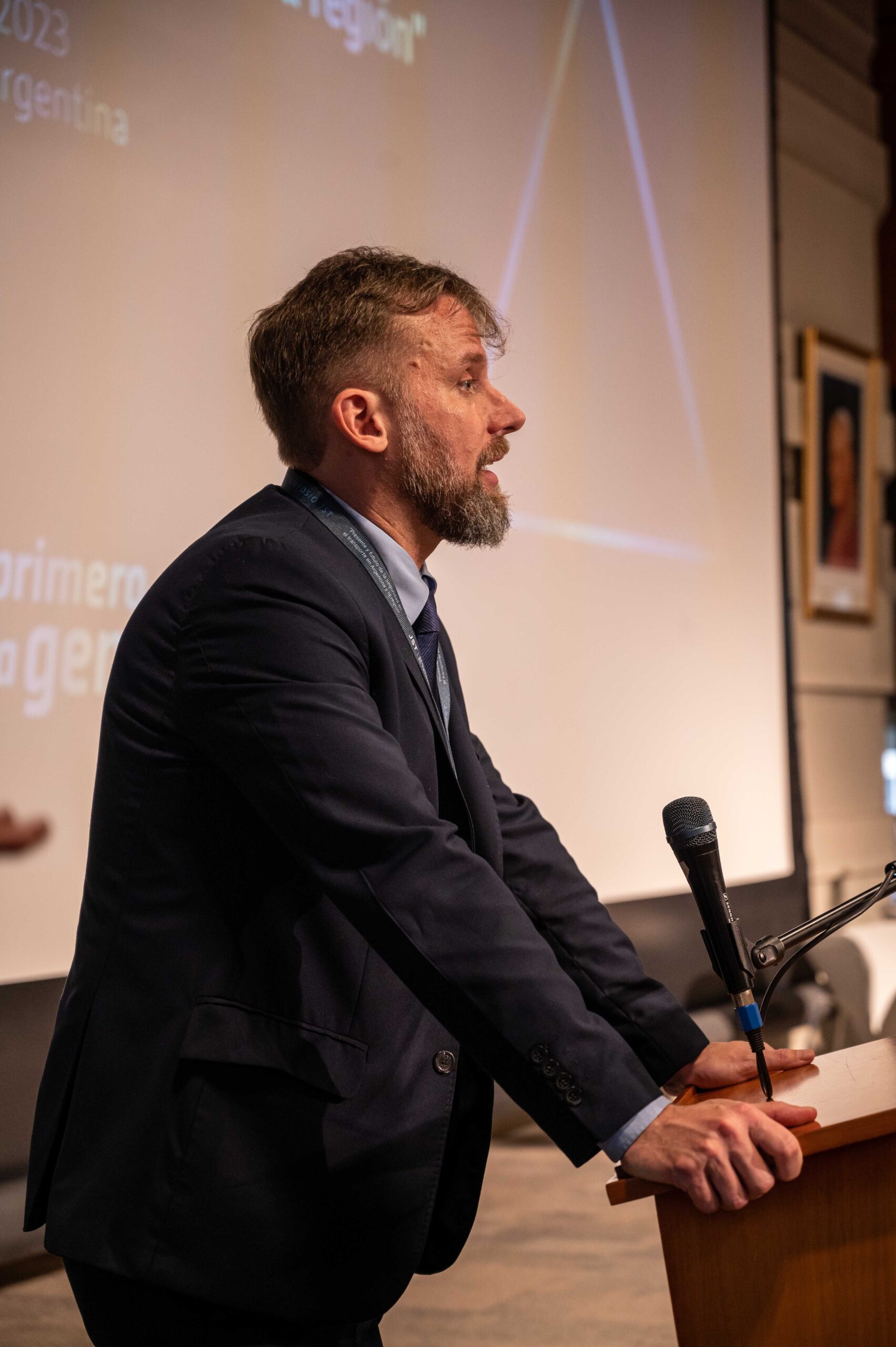 Lastly, the President of the Transportation Safety Board, Julian Obaid, addressed the audience, stating: «The JST is composed of a highly professional team. We are delighted to host this Symposium, present the digital magazine RSO (Operational Safety Review), and gather such a distinguished audience, with a commitment to strengthening safety in various modes of transportation.»
Lastly, the President of the Transportation Safety Board, Julian Obaid, addressed the audience, stating: «The JST is composed of a highly professional team. We are delighted to host this Symposium, present the digital magazine RSO (Operational Safety Review), and gather such a distinguished audience, with a commitment to strengthening safety in various modes of transportation.»

/https://aviacionlinecdn.eleco.com.ar/media/2023/04/DSC03948-scaled-1.jpg)
Para comentar, debés estar registradoPor favor, iniciá sesión